Are you feeling the heat inside your home this summer and desperately searching for ways to stay comfortable? If so, you’re not alone. Many homeowners find themselves battling against the heat, trying to keep their homes comfortable while avoiding sky-high energy bills. However, you can take certain measures to beat the summer heat and make your house feel comfortable and cool during those sweltering months.
Why Is My House Unevenly Cooled?
Many times, houses are unevenly cooled due to inadequate insulation or air leakage. Without proper insulation and air sealing, warm air from outdoors can seep into the home through gaps around windows and doors, resulting in uneven temperatures throughout the house. Additionally, if the ventilation system is not optimally designed or maintained, it may be unable to properly cool certain areas of the house while other rooms remain too cold.
Finally, your thermostat settings may be set incorrectly which could cause some rooms to be cooler than others. [1]
Solutions To Cooling A Hot Room
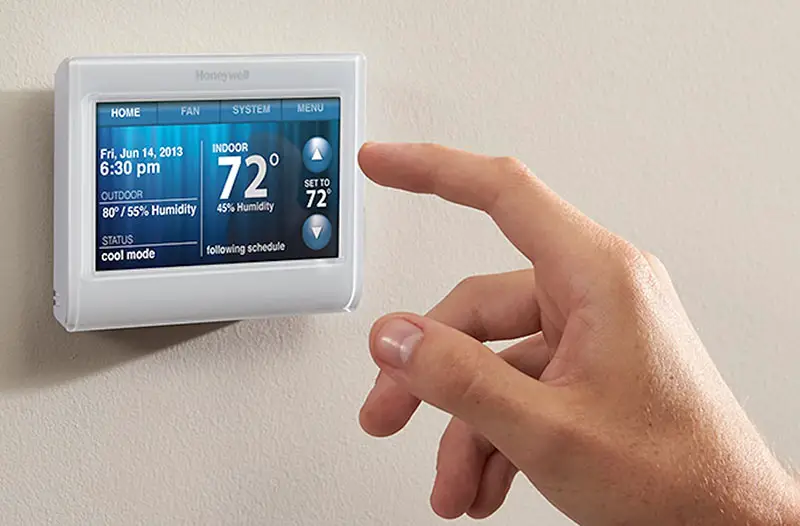
Get Strategic With Landscaping
One of the best methods to cool a hot room is with strategic landscaping. By planting trees near windows and creating shade, you can keep your house cooler by blocking some of the sun’s direct rays. Additionally, painting outdoor walls white or another light color helps reflect heat away from the house.
Install Window Coverings
Another way to reduce heat in a room is with window coverings. Thick curtains that can block out sunlight not only help keep rooms cool, but also reduce glare on electronics like TVs and computers.
Use Ceiling Fans
Ceiling fans are an easy and inexpensive way to circulate air in a hot room. Running fans in a clockwise direction pushes down cooler air from the ceiling, cooling the room. For optimal results, use a fan in conjunction with your air conditioner.
Install An Air Conditioner
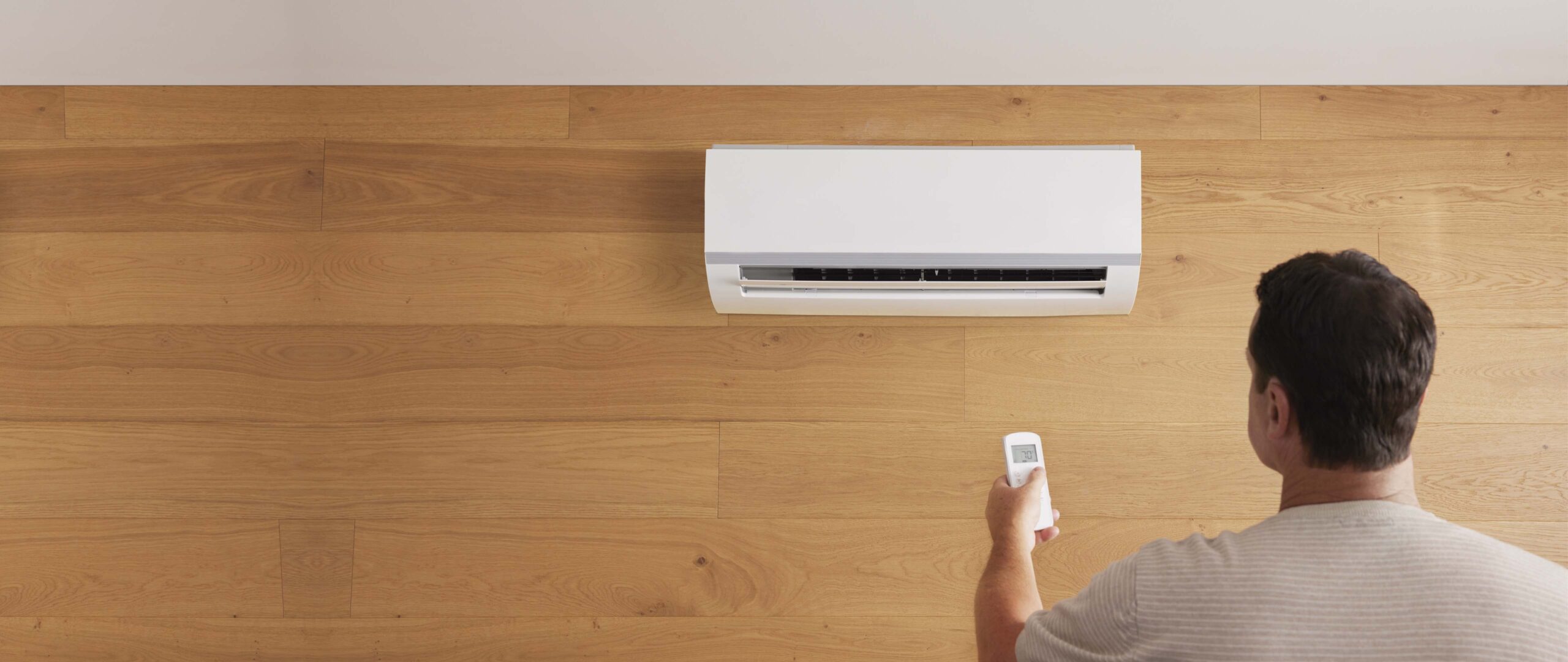
If all else fails, installing an air conditioning unit is the best way to cool a hot room. Modern units are more energy efficient and come with features like timers and remote control so you can easily adjust settings and save on energy costs. Although installation might be pricey, it’s worth it if you need to make drastic temperature changes quickly.
Update Insulation
Adding insulation around windows and doors can help reduce heat transfer into a home. Make sure that any gaps or leaks around window frames are sealed up tight as they may allow warmer air to sleep in during summer months. Also inspect walls and ceilings for any holes or cracks that might be letting heat in.
Upgrade To Energy Efficient Appliances
Switching to energy efficient appliances is also a great way to reduce the temperature of a hot room. In order to maintain a cool home while saving on energy costs, look for models with an ENERGY STAR label. These devices use up to 20% less power than standard models and will help reduce your monthly bills! [2]
Shield Your Windows
One of the most cost-effective ways to keep a hot room cool is by shielding your windows. Install reflective window films or tinted glazing to help reduce heat gain during summer months. This can be a great way to make a noticeable difference in temperature without having to invest in an expensive air conditioning system.
Go Ductless
Ductless air conditioners are ideal for cooling a single room or small area of your home. These systems are easy to install and use, making them perfect for those who don’t want to invest in a full-scale central air conditioning system. They also come with special features like timers, remote controls, and temperature sensors so you can easily adjust settings as needed.
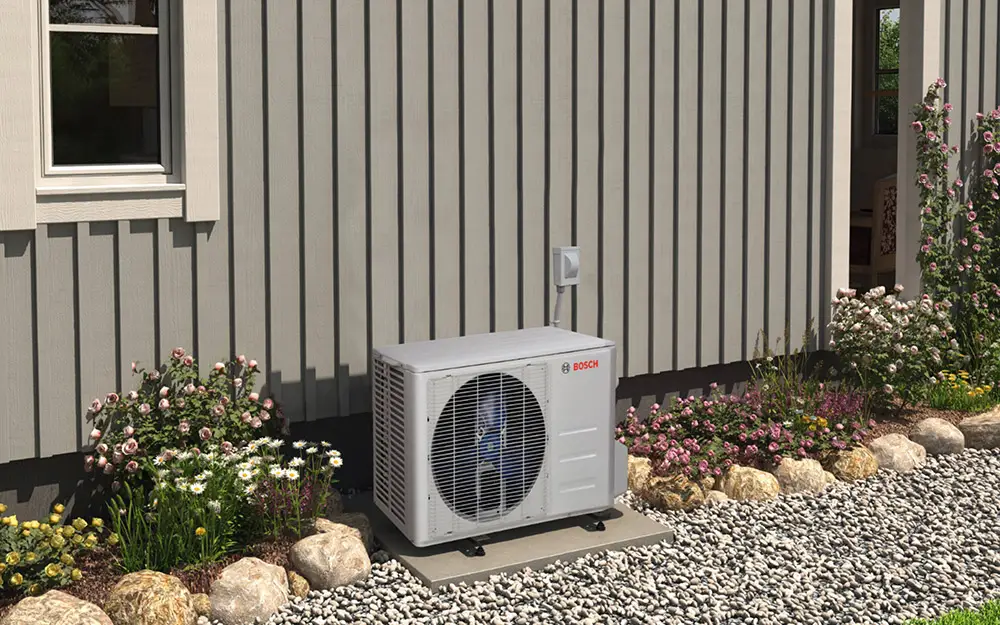
Switch to CFL or LED Bulbs
Replacing traditional light bulbs with CFL or LED bulbs can not only reduce your electricity consumption, but also help to keep a room cool. Investing in energy efficient bulbs is a wise decision. Not only do they generate much less heat than conventional incandescent bulbs, but they can also last up to 25 times longer! Plus, you can save big on energy bills by switching to these more efficient models.
Limit Hot Meals
When it’s hot outside, resist the temptation to whip up a big hot meal in your kitchen. Cooking with an oven or stovetop adds extra heat to a room that may be hard to cool down. Instead, opt for lighter meals like salads and sandwiches during summer months.
Cool Your Roof
Another way to keep your house cool is by cooling your roof. Adding reflective paint or materials to your rooftop can help reflect away some of the sun’s energy, which helps keep the attic space — and the rest of the house — cooler during hotter days. Plus, installing insulation in your attic will reduce radiant heat from entering through the roof and into your home.
Take More Cold Showers

Taking cold showers can help cool you down when a hot room is making you uncomfortable. The cool water helps regulate your body temperature and also prevents sweating, which can make a big difference in the overall comfort level of a room. Additionally, it’s an easy way to save energy since taking cold showers requires no electricity or gas. [3]
Cool Your Furniture
In addition to cooling the air in a hot room, cooling your furniture can also make a noticeable difference. Look for fabrics that are breathable and made of natural materials like cotton or bamboo as they will help keep you cool while sitting or sleeping. Additionally, try placing ice packs or frozen water bottles on chairs, couches, and beds to keep them at a comfortable temperature during summer months.
Take Advantage Of Nighttime Cooling
On hot summer nights, open windows and shut doors to take advantage of the cooler temperatures outside. This will help reduce indoor temperatures during the night so that rooms are more comfortable when you wake up in the morning. Make sure you close all windows and doors before it starts to get too warm outside again.
Seek Shade
If possible, try to locate your windows where they receive the least amount of direct sunlight. Hanging blinds or curtains over the windows can also help reduce heat gain while still allowing in natural light. You can also use awnings to keep sun off patios and decks, which will create a cooler outdoor area that you can enjoy during summer months.
How Hot is the Worst Room in Your House?
The first step to fixing a hot room in your house is determining exactly how hot the worst room actually is. It’s important to be able to accurately describe the level of heat that you feel in each room of your home, so don’t hesitate to use a thermometer if necessary. The temperature should ideally be between 65 and 72 degrees Fahrenheit for optimum comfort. [4]
Know Your Contributing Factors
Heat Producing Electronics
Electronic devices such as computers, TVs, and even cordless phones generate heat. Make sure to have enough space between these items and other furniture in order to allow the heat to dissipate.
Windows
Sunlight coming through windows can be a major contributor to heat gain in a room. Consider treating the window with a reflective film or installing window shades or blinds that are designed for thermal insulation.
Insulation
Many homes lack proper insulation which can contribute significantly to making a room hot. If you’re noticing consistently high temperatures throughout your home, consider checking into the condition of your insulation first. This is especially true if you’re living in an older home that may not have been built with adequate insulation from the start.

Orientation to the Sun
If the room has multiple windows, take note of what direction these windows face. If they are facing south or west, they will be hit with more sun throughout the day which can lead to increased heat gain. Try blocking out the sun using awnings or other shading techniques.
Air Conditioning Systems
Make sure your air conditioning system is running properly and efficiently and that it is sized correctly for your home. This can have a major impact on temperature control in hot rooms.
Ceiling Fans
Installing ceiling fans in your home can help circulate air and keep temperatures low during warmer months. Make sure to use reverse settings on fans so they push air down during summer months rather than pulling it up towards the ceiling.
Distance from the HVAC Unit
If you have a forced air heating and cooling system, make sure the room is set up at a good distance from your HVAC unit. This will help ensure that it can provide an adequate amount of conditioned air without being overworked.
Natural Ventilation
Take advantage of natural ventilation wherever possible by opening windows during cooler times of day to allow fresh air in and hot stagnant air out. When nighttime temperatures cool off, consider using exhaust fans to draw out warm air while letting cooler air enter through open windows or doors. Keeping the house ventilated can help keep rooms cooler throughout the day.
Location in House
Hot rooms are often situated in places like attics, basements or other areas that do not have as much insulation. Consider adding extra insulation if possible to help keep the room cool.
Additionally, closing off doors to other parts of the house can help insulate and keep heat away from that particular space.
These are just some of the common contributing factors that can make a room hot. With a few simple steps, you can help reduce the temperature and make your home more comfortable for everyone.
Finding out what is causing the high temperatures and addressing those issues directly will be key to fixing your hot room quickly and efficiently! [5]
In-Depth HVAC Inspection and Repair
If you’ve tried the simple solutions listed above and still can’t seem to cool down your hot room, it may be time for an in-depth HVAC inspection and repair. A qualified technician will inspect your entire unit from top to bottom and make any repairs or adjustments necessary. From checking ductwork for leaks to replacing air filters, they’ll identify what needs to be done in order to restore cool air flow throughout your home.
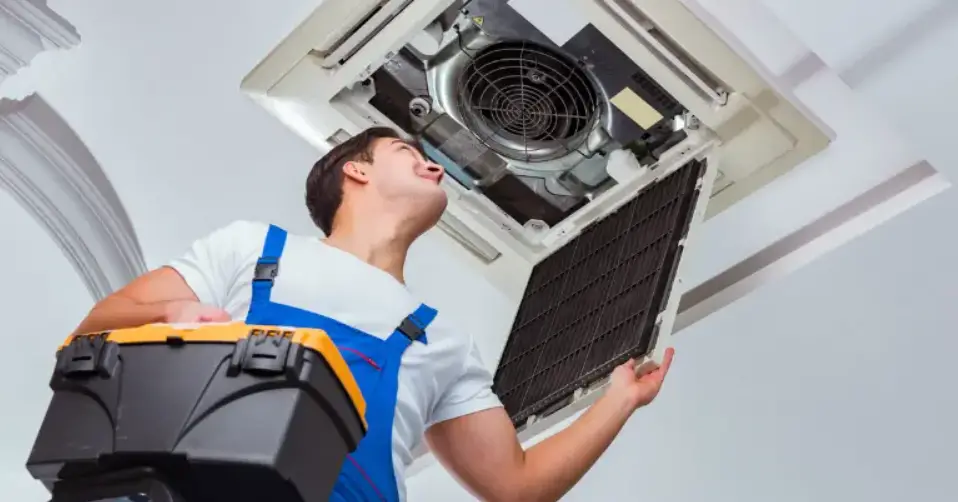
They may also suggest upgrading the size of your system if it is too small for your home, as this could result in rooms not getting enough cooled air. In addition, they can check that the thermostat is functioning properly and set up a regular maintenance schedule so that the system can be inspected and serviced before summer arrives each year.
FAQ
How can I cool down the hottest room in my house?
There are a few things you can do to help cool down the hottest room in your house.
- Make sure all windows and doors are closed: closing the windows and doors of the hot room will reduce air flow and prevent warm air from entering the space.
- Install shading on windows: using curtains, blinds, or shades on any windows in the hot room can block out direct sunlight that is heating up the space.
- Utilize fans: setting up one or more fans in the room can keep air circulating and create a cooling effect for occupants of the room. Additionally, you may want to consider installing an attic fan if there is an attic directly above or near the hot room.
- Install air conditioning: if all else fails, installing an air conditioning unit in the room can provide direct cooling relief when temperatures start to rise.
- Consider alternative materials for walls and floors: using lighter colored wall coverings or flooring material can help reflect sunlight away from the room and reduce interior temperatures. Additionally, using insulation in the walls can also help regulate temperatures within the space.
- Monitor appliances and electronics: making sure that any electronics or appliances in the hot room are turned off or unplugged when not in use will limit heat generating activities within the space and lower overall temperature levels in the room.
- Reduce humidity levels: utilizing a dehumidifier to remove excess moisture from the air can help cool down a room quickly and keep it that way.
- Seal off any cracks or openings: sealing up any gaps or openings around windows, doors, and floors can also help prevent extra hot air from entering the space.
Why is one room really hot in my house?
There can be many reasons why one particular room in your house is very hot. It could be due to improper insulation, inadequate air circulation, or general air flow issues. Check the windows and doors of the room to make sure they are sealed properly and that no drafts are entering into the space. Make sure there is sufficient airflow through a ventilation system or fans to help cool down the temperature. Additionally, check to see if any items like curtains or furniture are blocking vents or restricting air flow. If your home has ductwork for the HVAC system, it’s important to keep them clean and free from debris so they can function efficiently.
If you have an attic directly above the problem room, check for proper insulation to keep the heat from the roof out. For rooms with direct sunlight, install blackout curtains or shades to block out some of the sun’s heat. You can also try opening windows during cooler times of day to let in fresh air and reduce overall indoor temperature.
Finally, if none of these solutions work, you may need to invest in a portable air conditioner for more targeted cooling.
Why is my room temperature not going down?
If you’re struggling to keep your room cold, there are a few things you can do to cool it down. First, make sure the windows and doors are closed so that cool air cannot escape. Second, adjust the blinds or curtains to block out direct sunlight during the day. Third, use a fan to circulate air throughout the room. Finally, check any vents if they need cleaning as this can help improve airflow in the space. If all else fails, consider adding an air conditioner or dehumidifier to your room for additional cooling effect.
How do I redirect heat from one room to another?
If you want to redirect heat from one room to another, the most effective way is to insulate and seal any gaps around doors or windows. This will prevent warm air from escaping the room and will help direct it into the other space. Additionally, consider installing a fan in the desired room which will help circulate cooler air from outside or from another part of the house. Finally, rearrange furniture and curtains away from windows and near sources of cool air in order for them to absorb more of it.
How do I lower my room temperature without an AC?
If you don’t have access to an air conditioner, there are still ways to keep your home cool. First off, make sure all windows are closed during hot days so that cool air doesn’t escape. Secondly, keep blinds and curtains closed during the day to reduce direct sunlight entering the room. Thirdly, install a fan or two in order to circulate cool air throughout your home.
Finally, if possible, consider investing in a dehumidifier as it can help to lower the temperature by removing excess moisture from the air. These tips should help you maintain a cooler temperature in your home without AC!
What happens if your room is too hot?
It’s alright if it’s just a little too warm, but when the temperature is unbearable or too uncomfortable to sleep in, then you may need to take further action. Here are some tips to help you fix a hot room in your house:
- Check Your Air Conditioner Settings: If your air conditioner isn’t cooling as well as it used to, make sure all of its settings are correct. Check the fan setting and make sure it’s set on “auto” rather than “on” so that the fan isn’t running unnecessarily. Also, check your thermostat and ensure that the temperature isn’t set too high.
- Clean Your Air Filter: The air filter in your air conditioning system can become clogged with dust, pet fur and other debris. This restricts the amount of air that passes through it, causing the AC to run less efficiently. To fix this problem, regularly clean or replace your air filter.
- Close Blinds and Curtains: Sunlight coming into a room can significantly increase its temperature. Make sure to close blinds and curtains during the day to keep out excess sunlight and heat.
- Install an Attic Fan: If you have an attic, then installing an attic fan may help draw hot air out of the room and lower its temperature.
Additionally, make sure there is adequate ventilation in the attic to facilitate airflow from outside into the home.
Does sleeping with the door closed make the room hotter?
Yes, keeping a door closed can make a room hotter. By closing the door, you are cutting off the air circulation and trapping hot air inside the room. If possible, try to keep your doors open during the day so that cooler air from other parts of the house can circulate through it. There is no one-size-fits-all solution for fixing a hot room in a house.
Useful Video: OW TO FIX HOT & COLD ROOMS IN YOUR HOME 🔥❄️
Conclusion
To cool down a hot room in your house, you need to start with some basic fixes like closing curtains during the day or using fans and AC if available. You can also take further steps such as insulating windows, sealing air leaks, and improving ventilation. Once these measures are taken, your room should be more comfortable throughout the year. Remember that it is important to assess each individual situation before taking action since the best solution may vary depending on different factors. With just a few simple steps, you will be able to create an ideal living environment for yourself and your family.
Best of luck!
References
- https://williamscomfortair.com/knowledge-center/why-is-your-home-cooling-unevenly/
- https://www.thespruce.com/window-air-conditioning-tricks-1824737
- https://greatist.com/happiness/how-to-cool-down-a-room
- https://www.vivint.com/resources/article/best-home-room-temperature
- https://www.logan-inc.com/blog/article/5-solutions-cooling-hot-room
- https://frederickair.com/home-comfort/how-to-fix-a-hot-room-in-your-home/





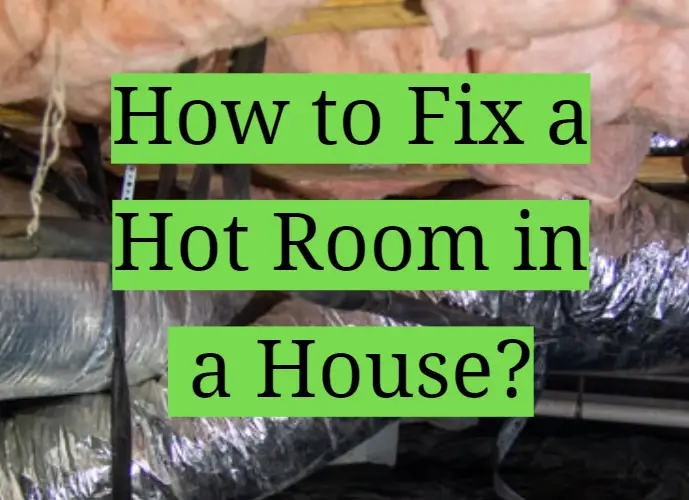








Leave a Reply